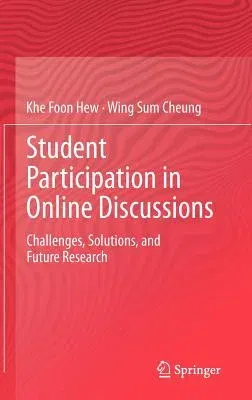The increasingly prevalent use of online- or blended-learning in schools
universities has resulted in asynchronous online discussion forum
becoming an increasingly common means to facilitate dialogue between
instructors and students, as well as students and students beyond the
boundaries of their physical classrooms. This proposed academic book
contributes to the literature on asynchronous online discussions in the
following three main ways: First, it reviews previous research studies
in order to identify the factors leading to limited student
contribution. Limited student contribution is defined as students making
few or no postings, students exhibiting surface-level thinking or
students demonstrating low-level knowledge construction in online
discussions. It then identifies the various empirically-based guidelines
to address the factors. Second, three potential guideline dilemmas that
educators may encounter: (a) use of grades, (b) use of number of posting
guideline, and (c) instructor-facilitation are introduced. These are
guidelines where previous empirical research shows mixed results when
they are implemented. Acknowledging the dilemmas is essential for
educators and researchers to make informed decisions about the
discussion guidelines they are considering implementing. Third, nine
exploratory case studies related to student-facilitation and audio-based
discussion are reported on and examined. Using students as facilitators
may be an alternative solution to educators who wish to avoid the
instructor-facilitation guideline dilemma. Using audio discussion would
be useful for participants with poor typing skills or those who prefer
talking to typing. The proposed book is distinctive in comparison to
current competitor titles because all the findings and guidelines are
empirically-based. Furthermore, the nine expanded case studies provided
specifically address the issue of student/peer facilitation and
audio-based discussion. Student/peer facilitation and audio discussion
are two areas that hitherto received comparatively lesser attention
compared to instructor facilitation and text-based discussion.

